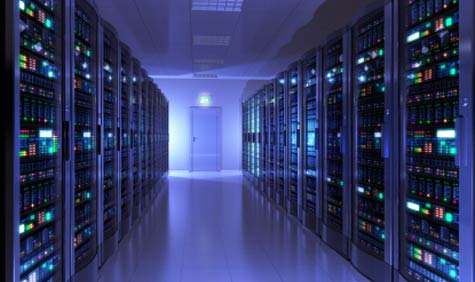Technology solutions come and go in the enterprise, if not in an absolute sense then at least in terms of the dominant roles they play in driving data productivity.
At one time, the mainframe was all-powerful, and while many mainframes continue to provide valuable service to the enterprise, it is fair to say they are no longer the focus of most server infrastructure initiatives. Many mainframe workloads, in fact, were pushed onto rack servers first and then blades in the 1990s and 2000s as distributed architectures proved more flexible and easier to manage. But now that cloud computing and modular infrastructure are rising to meet the needs of mobile collaboration and Big Data workloads, it is fair to ask whether the sun is setting on blades as well.
A look at the numbers suggests the answer is no. Mordor Intelligence estimates that the global blade server market is expanding by 9.63 percent, putting it on pace to top $15.7 billion by the end of the decade. Key drivers include improved data center efficiency and increased densities to handle burgeoning workloads. Add to that the fact that many blade platforms are starting to incorporate not just CPU and memory, but disk memory and networking, and it looks like the blade will maintain a substantial presence in the next-generation data center.
But if this is the case, why are top server manufacturers like Dell, HP and Cisco starting to downplay blades in favor of more modular, hybrid infrastructure? Whether it’s Dell’s PowerEdge FX platform, HP’s Moonshot or Cisco’s M-Series, the big push these days is on converged infrastructure and software-defined architectures. It can be argued that these platforms represent the evolution of blades, rack servers and other traditional systems, rather than their replacement, but the fact remains that what most IT pros consider to be a true blade is no longer the preferred solution for emerging workloads.
The goal moving forward will be to utilize these new devices to create “composable infrastructure,” says IDC’s Jed Scaramella. This will be defined by software-defined architectures based on disaggregated subsystems that are no longer bound to underlying hardware, which ultimately allow the enterprise to customize infrastructure to their unique application and workload requirements. Key elements in this new form of IT are storage and networking that is decoupled from processing and memory, giving the ability to provision and configure infrastructure on-demand, all of which is supported by intelligent software management that enables much of this infrastructure-building to happen behind the scenes.
Still, it is fair to say that blades will continue to support key data center functions, such as virtual desktop infrastructure. NVIDIA, for example, recently showed off its GRID line of graphics processors in support of VMware’s VDI platform, where they will be used to deliver improved desktop performance from pooled blade architectures. Based on the Maxwell processor, the GRID 2.0 platform is built on the MXM form factor that was originally developed for laptops but has since been ported over to blades. The new version also supports Linux environments as well as Windows and will be available in four-chip configurations on HP blades starting early next year.
Blade servers were the first to show enterprise executives the potential of dense server configurations, but it seems that the density limits of the initial designs are no longer sufficient for emerging workloads, particularly when even blades must still be supported by a fairly complex networking and storage environment. These days, density has to encompass all physical infrastructure, with the entire data center essentially becoming a single, scalable computing environment.
And the funny thing is, the more this stage of infrastructure evolution unfolds, the more the data center starts to look like a mainframe.
Arthur Cole writes about infrastructure for IT Business Edge. Cole has been covering the high-tech media and computing industries for more than 20 years, having served as editor of TV Technology, Video Technology News, Internet News and Multimedia Weekly. His contributions have appeared in Communications Today and Enterprise Networking Planet and as web content for numerous high-tech clients like TwinStrata and Carpathia. Follow Art on Twitter @acole602.




